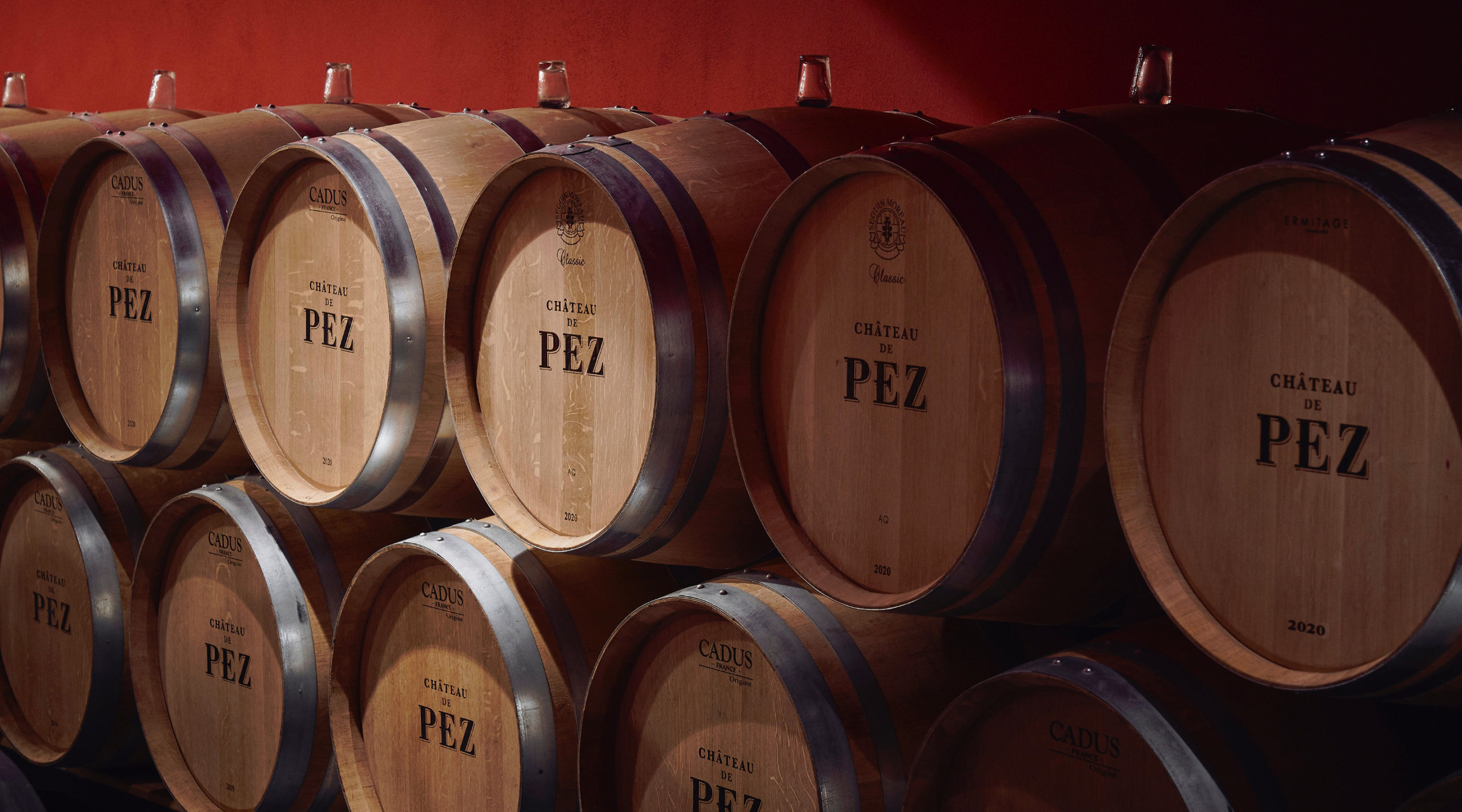
Blandine
Prevot
VINEYARD MANAGER

Among the great diversity of Saint-Estèphe soils, the Pez vineyard is planted on a wonderfully balanced terroir typical of the Quaternary Period with Garonne gravel atop a clay subsoil.
It is one of the highest vineyards in the appellation. The hilly terrain drains well. The proximity with the Gironde estuary protects from frost. Hailstorms are very rare… The wind dries out the leaf canopy and provides a natural barrier to diseases as well as regulating rainfall… Everything comes together to make a great wine.
Our objective is two-fold: reveal the terroir and preserve it. The permanent vineyard team at Château de Pez, made up of 16 people, apply measures such as Guyot-Poussard pruning, decisive to the grapevine’s development.
I like to say that we use good-old common sense, like mechanical tilling and organic fertilisers tailored to needs. We constantly question our practices and impact, which has naturally led us to using green cover between the vines.
We also want to preserve and develop biodiversity, for example by planting hedges that act as “ecological corridors” or by installing beehives in the vineyard to provide valuable pollination and serve as an indicator of the environment’s condition.


Jean-Luc
Chazeau
CELLARMASTER

Pez enjoys wide recognition among its peers here in the appellation, and not just for the prestige of its long history. Without tracing back to its very beginnings, a vintage like 1964 Pez is part of the legend of Saint-Estèphe.
But for many years, the Château de Pez first wine remained in the shadows. By including the estate in the “Roederer Collection”, Jean-Claude Rouzaud put Château de Pez on the world map.
From the early 2000s, the Louis Roederer House also sought to develop all the high-quality potential it saw in Pez. Precision work began in earnest, from the vineyard to barrel ageing, to assert the wine’s characteristic style.
The vineyard was entirely redesigned on a plot-by-plot basis to create a new balance between the roundness of Merlot and the structure of Cabernet Sauvignon. The vat room was adapted accordingly, with 18 stainless-steel truncated cone-shaped vats added to allow the terroir to express its nuances to the full. This plot-by-plot approach has been supplemented by Eric Boissenot’s remarkable work during pressing, which brings structure and complexity to Château de Pez’s first wine.
The restructuring begun in 2005 and is now yielding results. The precision accorded to every detail, right down to the meticulous selection of our 600 French oak barrels, has produced a typical Méoc wine which is fairly powerful, fruity, round, rich and smooth on the palate, making for a delicious wine with excellent ageing potential.





Saint-Estèphe appellation
42 hectares – 70 plots
Gravel rises
on clay-limestone
subsoil
HEV3
(High Environmental Value)
Grand Vin

Grand Vin
Distinguished,
noble, elegant
Deep, classy,
the smooth taste of black fruit,
and minerality expressed by the terroir.
wine as a pleasure...
View the latest vintages
The Second Wine
A jovial,
lively character!
Bordeaux, Saint-Estèphe,
laid-back and relaxed
The pleasure of a glass of wine,
fruity and smooth.
View the latest vintages


